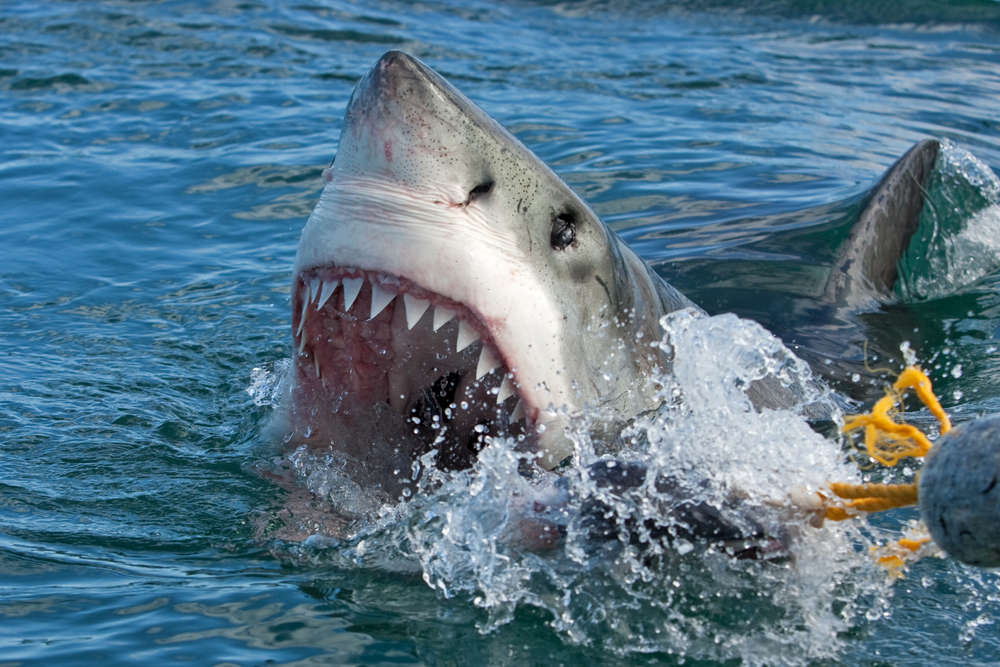Sharks have long been viewed as the ultimate predators of the ocean, but their reputation is not always deserved. Out of over 500 known shark species, only a small number pose a real threat to humans. Most sharks are harmless, playing important roles in balancing marine ecosystems by controlling fish populations and keeping oceans healthy. However, a few species are powerful, aggressive, or curious enough to be dangerous when encounters occur. Below is an in-depth look at five sharks considered the most dangerous and five species that are completely harmless.
1. Great White Shark
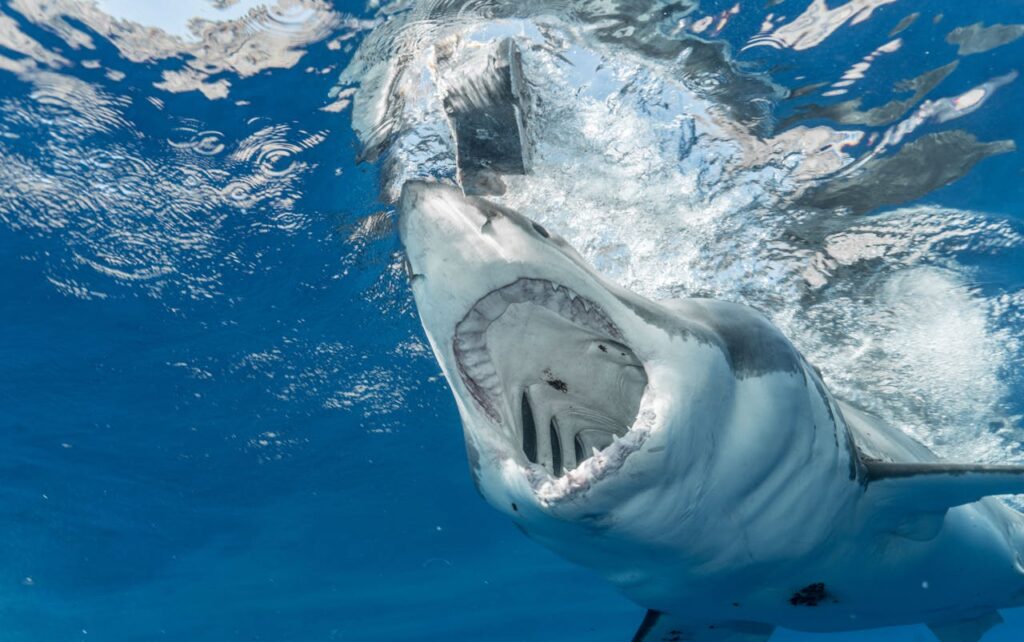
The great white shark is the most feared and well-known of all shark species. It can reach lengths of more than 20 feet and weigh several tons, making it one of the largest predatory fish in the sea. Its sharp, serrated teeth are designed to tear through seals, sea lions, and other large prey. Great whites often investigate their environment with a test bite, which can be deadly to humans because of their size and power. They are responsible for more unprovoked shark attacks than any other species. Despite their reputation, these sharks are not mindless killers. Most bites are cases of mistaken identity when a shark confuses a human with its natural prey. Still, because of their size, speed, and strength, great whites are considered the most dangerous shark in the world.
2. Tiger Shark
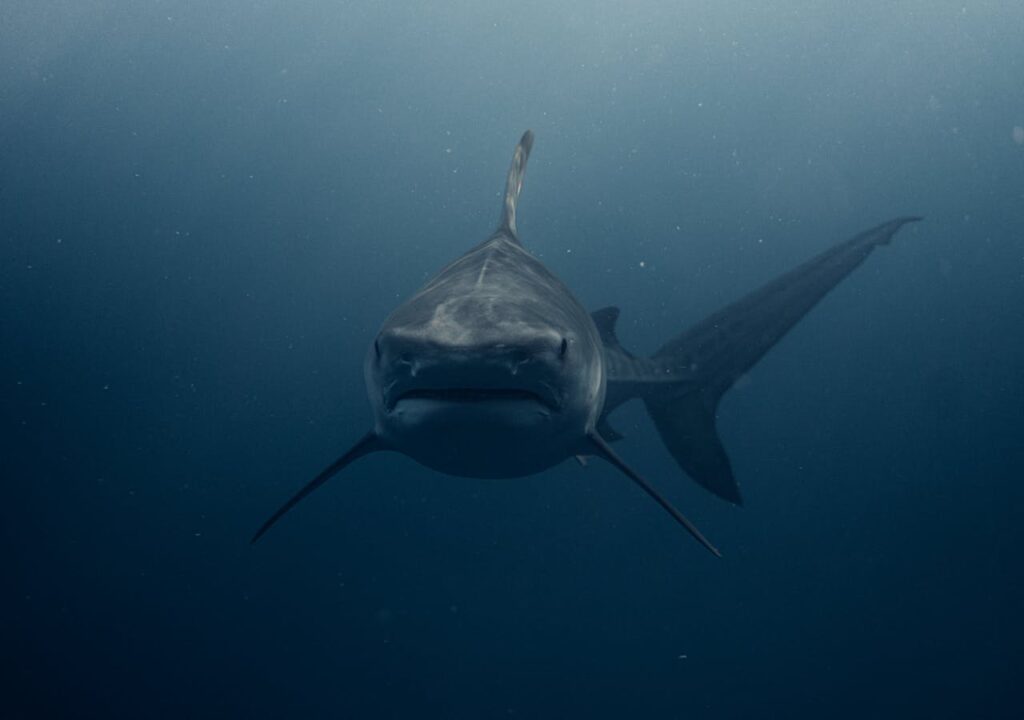
The tiger shark is a massive predator that can grow up to 16 feet long or more. Named for the dark stripes on its body, this species has one of the most varied diets in the shark world. It feeds on fish, seals, turtles, birds, and even man-made objects that it mistakes for food. Tiger sharks are often found in shallow coastal waters where swimmers and divers may be present, which increases the risk of encounters. They are the second most responsible species for unprovoked shark attacks on humans after great whites. Unlike some sharks that bite and swim away, tiger sharks are more likely to follow through when they decide to strike. This persistence, combined with their sheer size and unpredictable feeding habits, makes them one of the most dangerous predator’s.
3. Bull Shark
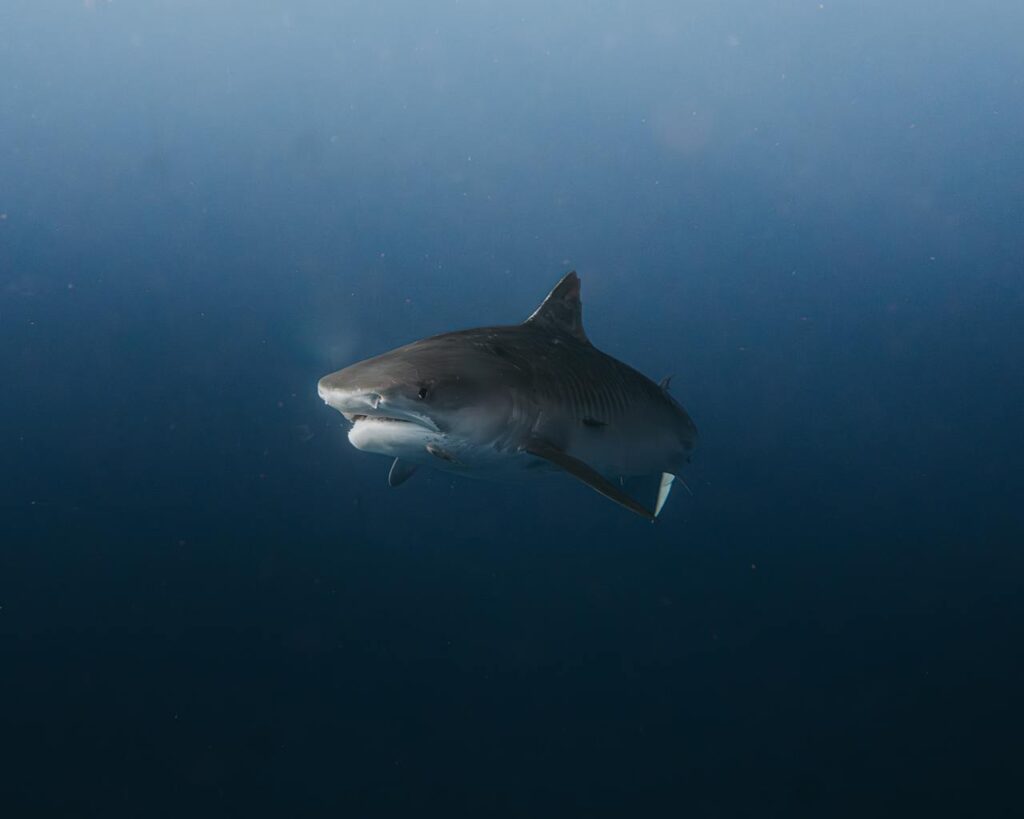
Bull sharks are known for their aggressive nature and ability to thrive in both saltwater and freshwater. They have been found in rivers far inland, which means they come into contact with people more often than most other large sharks. Bull sharks are stocky, muscular, and capable of quick bursts of speed, which helps them ambush prey. They are considered one of the top three most dangerous sharks to humans because of their unpredictable behavior and wide distribution. Attacks are more likely because they often swim in murky, shallow waters where people also swim, surf, or fish. Their strong jaws allow them to crush through bone and cartilage, adding to their reputation as one of the most aggressive species in the ocean.
4. Oceanic Whitetip Shark
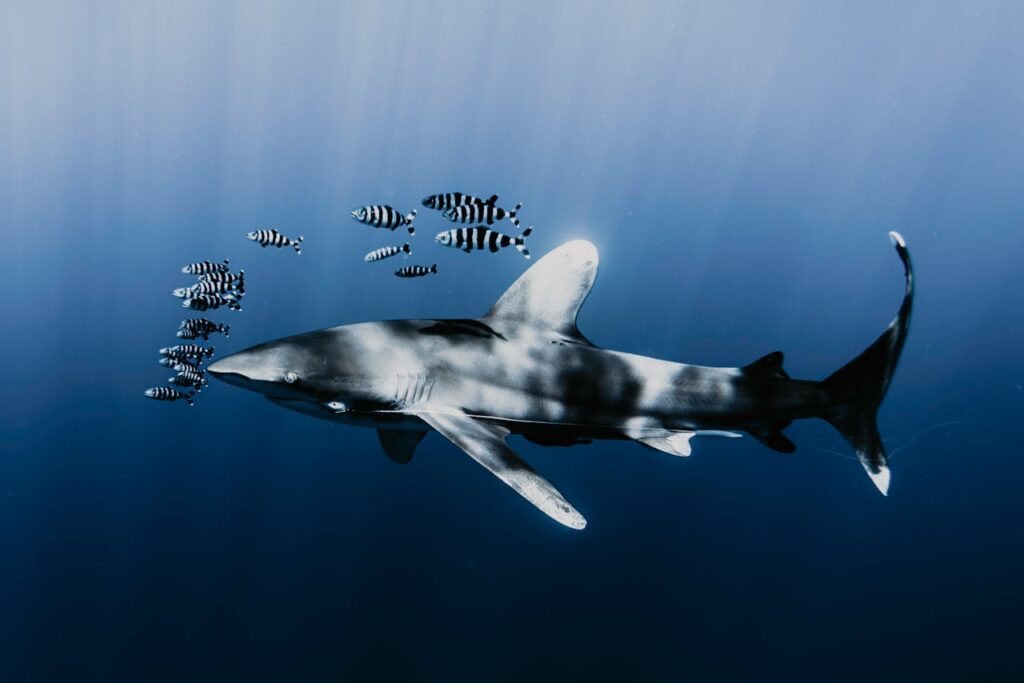
The oceanic whitetip shark is a less familiar species to many people but is considered one of the most dangerous sharks in open waters. It is easily recognized by the white tips on its rounded fins and its habit of swimming near the surface of the deep ocean. Historically, this shark was involved in attacks on shipwreck and plane crash survivors stranded in the water, which has cemented its reputation as a serious threat. Oceanic whitetips are bold, curious, and opportunistic feeders. Unlike other species that may avoid humans, they are more likely to approach and investigate. Although they are rarely encountered close to shore, they remain one of the most dangerous sharks when humans cross into their deep-sea environment.
5. Shortfin Mako Shark
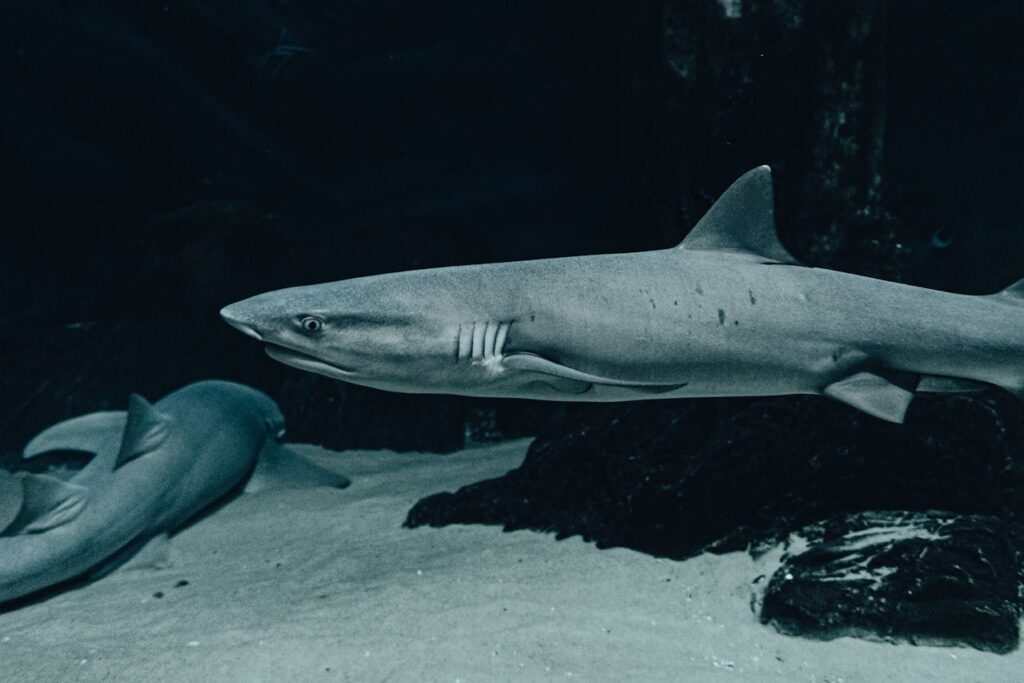
The shortfin mako is widely regarded as the fastest shark in the world, capable of speeds over 40 miles per hour. This speed, combined with its power, makes it a formidable predator. Shortfin makos primarily hunt fast-swimming fish like tuna and swordfish, but their encounters with humans have occasionally been dangerous. They can grow up to 12 feet long and are known for their sudden bursts of speed when striking prey. While not as frequently involved in attacks as great whites or tiger sharks, when they do attack, the results can be devastating due to the force of impact. Their strength and unpredictable nature put them on the list of the most dangerous sharks.
6. Whale Shark
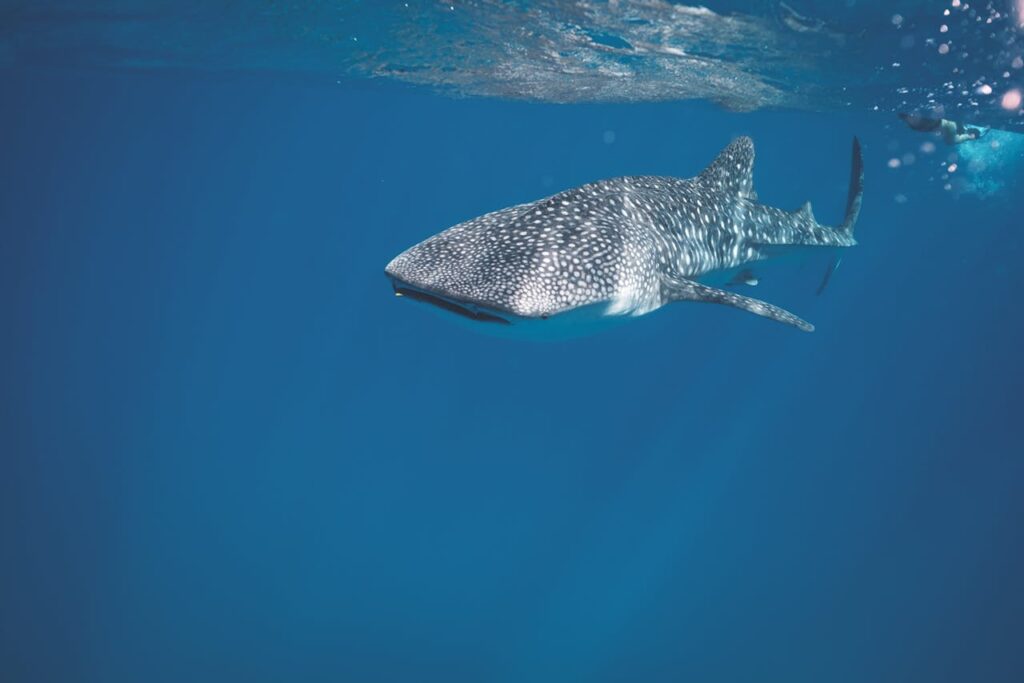
The whale shark holds the title of the largest fish in the ocean, reaching lengths of up to 40 feet. Despite its intimidating size, it poses no threat to humans. Whale sharks are filter feeders, swimming with their mouths open to collect plankton, small fish, and other tiny organisms. They are gentle giants that allow snorkelers and divers to swim alongside them without risk. Their calm nature and slow movements make them one of the most admired sharks in the world. Even though they are massive, they do not have the teeth or behavior needed to harm humans, making them completely harmless.
7. Basking Shark
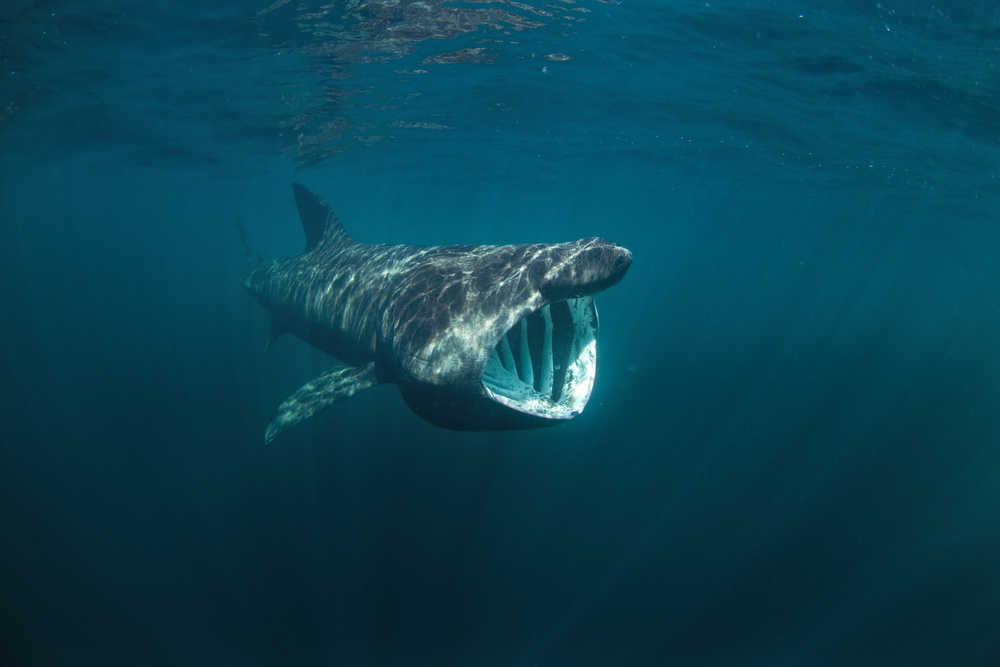
The basking shark is the second-largest fish in the sea, reaching lengths of 30 feet. Like whale sharks, basking sharks are filter feeders that consume plankton rather than large prey. Their huge mouths can look terrifying, but they are harmless to people. Basking sharks are often spotted near the surface, slowly swimming with their mouths wide open as they filter water for food. They are peaceful, slow-moving animals that pose no danger. Many sightings occur near coastlines in cooler waters, giving humans plenty of opportunities to observe them safely.
8. Nurse Shark
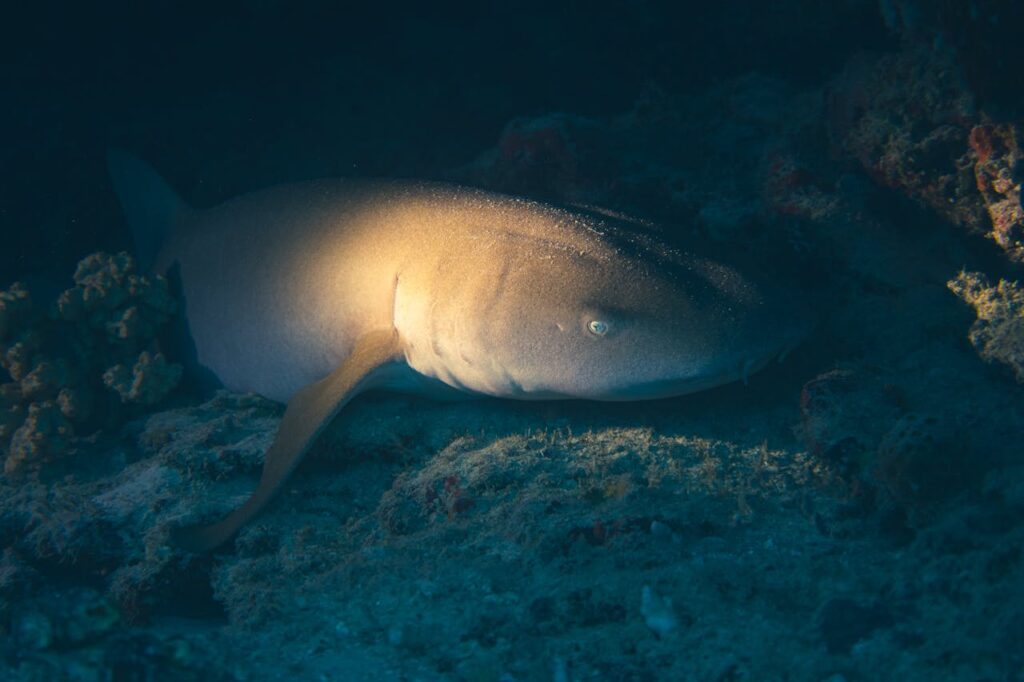
Nurse sharks are bottom-dwelling sharks that spend much of their time resting on the ocean floor. They can grow up to 14 feet long but are usually docile and calm. These sharks feed on crustaceans, mollusks, and small fish, using suction to pull prey into their mouths. Nurse sharks are often encountered by divers because they prefer shallow waters near reefs and sandy seabeds. While they are not aggressive, they may bite if provoked, cornered, or stepped on, but such incidents are rare. For the most part, nurse sharks are considered harmless to humans.
9. Leopard Shark

The leopard shark is a smaller species that rarely grows longer than 6 feet. It is commonly found along the Pacific coast of North America. Its distinctive spotted pattern makes it one of the most recognizable small sharks. Leopard sharks feed mainly on crustaceans, worms, and small fish. They are harmless to humans and are often seen swimming near beaches or in shallow waters. Because of their calm nature, snorkelers and divers frequently encounter them without concern. Some aquariums even house leopard sharks because of their manageable size and gentle behavior.
10. Angel Shark
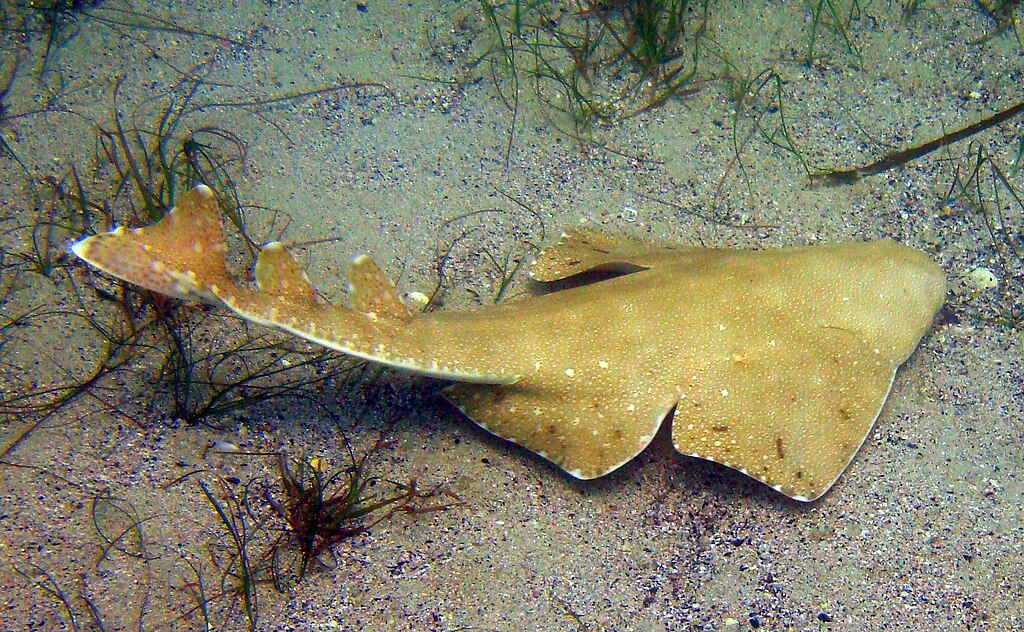
The angel shark is unique in appearance, resembling a ray more than a typical shark because of its flattened body. It spends most of its time buried in sand with only its eyes visible, waiting to ambush small fish or invertebrates that pass by. Angel sharks are not aggressive toward humans and are considered harmless. They do have sharp teeth and can bite if stepped on or provoked, but attacks are extremely rare. Divers often encounter them lying motionless on the ocean floor, blending into their surroundings. Their peaceful nature places them firmly among the harmless sharks.
Understanding Sharks
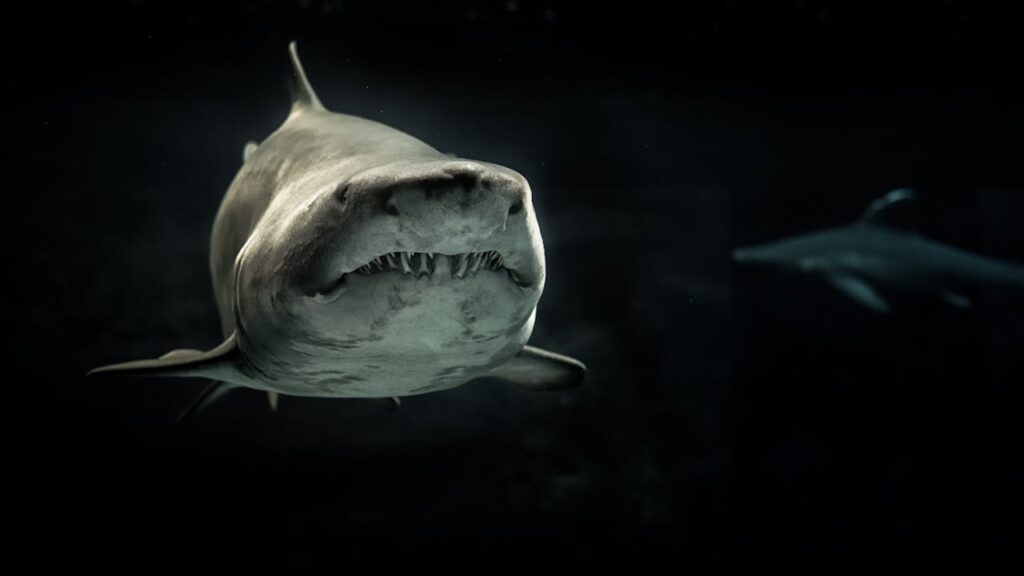
Sharks are often misunderstood and unfairly feared. Out of hundreds of species, only a handful are truly dangerous to humans, while the majority are harmless or even vulnerable to human activities like overfishing. Great whites, tiger sharks, bull sharks, oceanic whitetips, and shortfin makos deserve respect for their size, strength, and behavior, but attacks remain rare compared to how often humans enter their environment. On the other hand, whale sharks, basking sharks, nurse sharks, leopard sharks, and angel sharks show the diversity of species that pose no risk at all. Understanding which sharks are dangerous and which are harmless not only separates fear from fact but also helps us appreciate the role these incredible creatures play in the health of the oceans.
Read More: These Ocean Inspired Glasses Are Something Out of a Fairytale
Disclaimer: This article was created with AI assistance and edited by a human for accuracy and clarity.
